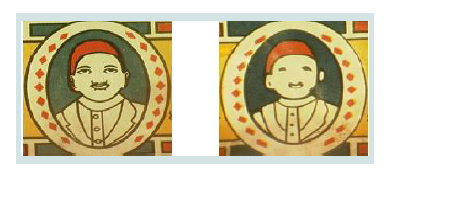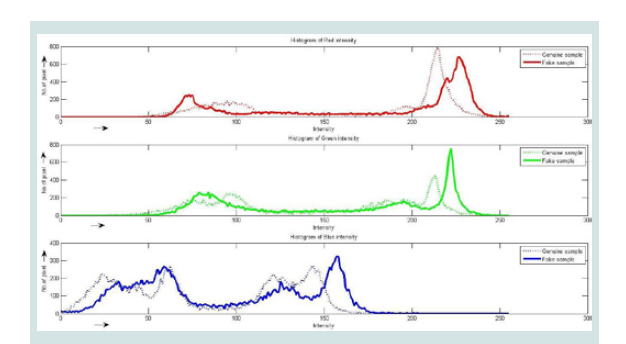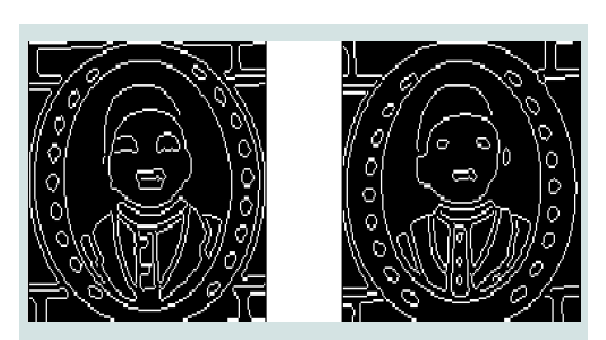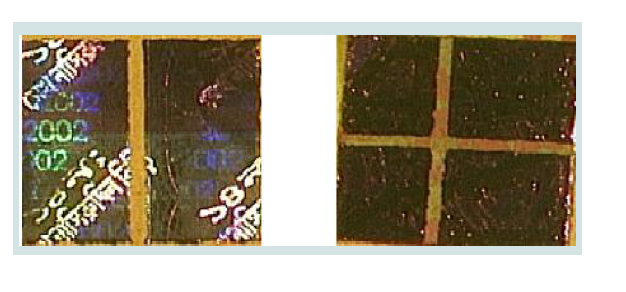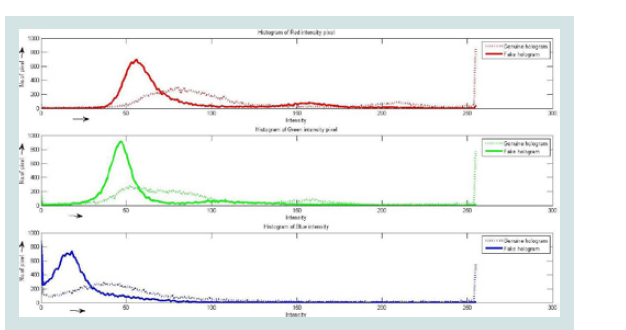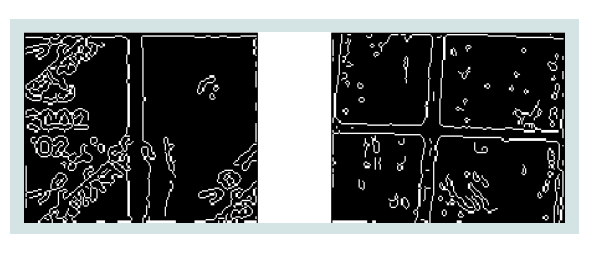Journal of Forensic Investigation
Download PDF
Case Report
Examination of Genuine and Fake Images by Histogram and Edge Detection Method- A Case Report
Bapi Saha, Ajitesh Pal* and Pratihari HK
- Tripura State Forensic Science Laboratory, Agartala, India
*Address for Correspondence: Ajitesh Pal, Forensic Studies Program, Tripura State ForensicScience Laboratory, Agartala - 799015, India, E-mail: ajiteshp@rediffmail.com
Citation: Saha B, Pal A, Pratihari HK. Examination of Genuine and Fake Images by Histogram and Edge Detection Method- A Case Report. J Forensic Investigation. 2017; 5(2): 2.
Copyright: © 2017 Pal A, et al. This is an open access article distributed under the Creative Commons Attribution License, which permits unrestricted use, distribution, and reproduction in any medium, provided the original work is properly cited.
Journal of Forensic Investigation | ISSN: 2330-0396 | Volume: 5, Issue: 2
Submission: 14 August, 2017 | Accepted: 06 October, 2017 | Published: 16 October, 2017
Keywords
Beedi (cheap cigarette wrapped in leaves); Video Spectral Comparator (VSC-5000); Logo; Hologram; Histogram; Edge detection
Abstract
This paper deals with the examination of genuine and disputed beedi (cheap cigarette wrapped in leaves) packages to establish genuineness. In one case, a dishonest trader made fake beedi , imitating the genuine product for huge sales in the market. He also made the product by copying the photograph, name of brand, logo, and hologram on the packages externally to be looking alike genuine brand for a good market. Subsequently the beedi was sold and original manufacturer lodged many complaints to the police. During investigation the police seized the fake package from the retailer along with a genuine one from the registered manufacturer for forensic examination and comparison. The image, hologram, logo and brand printed on both genuine and fake packages were viewed under Video Spectral Comparator and much difference in color, sharpness, size of the printed alphabet could be observed. Essentially, the traditional forensic methods were not sufficient to draw conclusion, hence the histogram and edge detection techniques in this study were applied to distinguish between the fake and genuine packages.
Introduction
There are various consumable and non-consumable products manufactured and marketed by traders for the consumers. The sale and purchase of the products depend on the quality of the item to attract consumers. There are various tobacco products which are sold at large scale in India. Sometimes, similar products of inferior quality are fraudulently produced and marketed to create a good business. Most of the time, the dishonest traders take opportunity to copy the popular brand and packaging similar to the genuine brand. In such cases, complaints are being received from the genuine manufacturers to examine the packages. The complaints are also being received from consumers too.
In due course of investigation, various documents bearing the name of brand, logo, hologram and other printed labels refer to a forensic laboratory for examination. Initially, such types of documents are being examined with magnifying glass, stereo microscope followed with Video Spectral Comparator to observe the following physical characters of both genuine and fake [1,2]:
a)Difference in texture of color printing;
b)Comparison of geometry of printed alphabets;
c)Observation on sharpness/fineness of printing;
d)Difference in quality of images under different light conditions;
e)Difference in ink and paper; and
f)Alignment of images printed on genuine and disputed products
In addition to traditional documents examination, histogram and edge detection techniques are considered reliable and accurate for comparison of images, logo, hologram as they are most useful tools for image analysis [3,4].
Materials and Methods
The genuine and fake beedi packages were physically examined through the look and tilt under different light conditions. Initially, the packages were suspected to be different. Thereafter, the hologram and logo on both the packages were compared under VSC-5000 (Video Spectral Comparator) and some dissimilarity was observed. Further, the images of the logo and hologram were analyzed by colour histogram and edge detection (Canny edge detection filter) methods using MATLAB software (version 7.10) [5,6].
Results and Discussion
The particular area covering logo was selected from both genuine and fake packages and processed for histogram and edge detection techniques (Figure 1). The histogram of selected area of both the samples was generated in Red, Green and Blue (RGB) colour intensity shown in Figure 2. The histogram analysis of both genuine and fake samples in RGB plane showing different graphical lines with respect to pixel values (Figure 2). The difference in the histogram is due to the variation in their RGB (Red-Green-Blue) color composition.
The edge pixels of both genuine and fake samples were also computed applying canny edge detection filter and results are shown in Figures 3A and 3B. The edge patterns of genuine and fake samples do not superimpose indicating they are not same. Similar methods have also been applied to the images of hologram of both genuine and fake (Figures 4A and 4B) and results shown in the Figures 5 and 6. The difference in edge pixel is due to the variation of their boundary structure and shape.
Figure 2: Histogram pattern of genuine logo shown by dotted line (...) and fake logo shown by solid line (-).
Figure 3: (A) Image generated by edge detection filter of genuine logo and (B) Image generated by edge detection filter of fake logo
Figure 5: Histogram pattern of genuine hologram dotted line (...) and fake hologram continuous line (-).
Conclusion
There are many consumable and non-consumable disputed products received for forensic examination to establish the genuineness. In this case, the physical examination of logo, hologram, brand and alphabets printed on both genuine and fake beedi packages was made by histogram and edge detection technique along with traditional method. The histogram and edge pattern generated through a computer program, a new tool, could convincingly distinguish between fake and genuine packages.
References
- Day SP, Ellen D, Davies C (2005) Scientific examination of documents: methods and techniques (3rd edn). International Forensic Science and Investigation Series, Taylor & Francis, CRC Press, USA, pp. 248.
- Koppenhaver KM (2007) Forensic document examination: principles and practice. Humana Press, USA, pp. 315.
- Patel T, Singh D, Anis M (2015) Analysis based on statistics and histogram of edge detection techniques. Int J Adv Res Sci Eng 4: 197-204.
- Jadwa SK (2016) Canny Edge Detection Method for Medical Image Retrieval. Int J Sci Eng Appl Sci 2: 54-59.
- Gonzalez RC, Woods RE (2001) Digital image processing (2nd edn). Addison-Wesley Longman Publishing Co., Inc., USA, pp. 793.
- Gonzalez RC, Woods RE, Eddins SL (2004) Digital image processing using MATLAB (2nd edn). Prentice Hall, USA.


